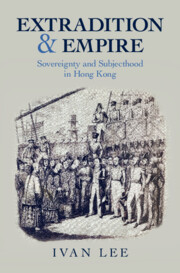Refine listing
Actions for selected content:
1294859 results in Books
5 - “We Can and Must Debate”: January 1967–April 1968
-
- Book:
- Less Than Victory
- Published online:
- 16 October 2025
- Print publication:
- 11 September 2025, pp 141-175
-
- Chapter
- Export citation
Ennead Five
-
- Book:
- Plotinus: The Enneads
- Published online:
- 11 September 2025
- Print publication:
- 11 September 2025, pp 533-534
-
- Chapter
- Export citation
Chapter 13 - Race
- from Part II - Themes and Issues
-
-
- Book:
- The Cambridge Companion to Modernist Theatre
- Published online:
- 28 August 2025
- Print publication:
- 11 September 2025, pp 233-249
-
- Chapter
- Export citation
4.3–5 (27, 28, and 29) - On Problems of the Soul 1–3
- from Ennead Four
-
- Book:
- Plotinus: The Enneads
- Published online:
- 11 September 2025
- Print publication:
- 11 September 2025, pp 387-483
-
- Chapter
- Export citation
6 - Far from Home
-
- Book:
- Ability and Difference in Early Modern China
- Published online:
- 10 September 2025
- Print publication:
- 11 September 2025, pp 138-162
-
- Chapter
- Export citation
Chapter 24 - “I Was So Tired of All the Words”
- from Part II - Lenses and Lessons
-
-
- Book:
- Learning through Social Work Stories-That-Matter
- Published online:
- 28 August 2025
- Print publication:
- 11 September 2025, pp 344-360
-
- Chapter
- Export citation
4.9 (8) - On Whether All Souls Are One
- from Ennead Four
-
- Book:
- Plotinus: The Enneads
- Published online:
- 11 September 2025
- Print publication:
- 11 September 2025, pp 526-532
-
- Chapter
- Export citation
Part III - Courts for a New Empire, 1816–1825
-
- Book:
- The Nation at Sea
- Published online:
- 28 August 2025
- Print publication:
- 11 September 2025, pp 189-278
-
- Chapter
- Export citation
Chapter 8 - On My Toes
- from Part I - Storying-to-Learn: How Stories-that-Matter Help Us Appreciate Social Work in Action
-
-
- Book:
- Learning through Social Work Stories-That-Matter
- Published online:
- 28 August 2025
- Print publication:
- 11 September 2025, pp 110-121
-
- Chapter
- Export citation
5 - Representing the Emperor
-
- Book:
- Ability and Difference in Early Modern China
- Published online:
- 10 September 2025
- Print publication:
- 11 September 2025, pp 115-137
-
- Chapter
- Export citation
7 - The Double Back
-
- Book:
- Through the Roof
- Published online:
- 28 August 2025
- Print publication:
- 11 September 2025, pp 205-235
-
- Chapter
- Export citation
5.3 (49) - On the Knowing Hypostasis and on That Which Is Transcendent
- from Ennead Five
-
- Book:
- Plotinus: The Enneads
- Published online:
- 11 September 2025
- Print publication:
- 11 September 2025, pp 556-579
-
- Chapter
- Export citation

Ability and Difference in Early Modern China
- A Mongol Family at the Ming Court
-
- Published online:
- 10 September 2025
- Print publication:
- 11 September 2025

Extradition and Empire
- Sovereignty and Subjecthood in Hong Kong
-
- Published online:
- 10 September 2025
- Print publication:
- 03 July 2025

Intersections of Housing Precarity, Health and Wellbeing in Diverse Global Settings
- What Is Happening to Housing?
-
- Published by:
- Bristol University Press
- Published online:
- 10 September 2025
- Print publication:
- 26 May 2025

Europe's World
- Policy Paradigms, Strategic Thinking and the Anti-Liberal Challenge
-
- Published by:
- Bristol University Press
- Published online:
- 10 September 2025
- Print publication:
- 27 May 2025

Long-Term Care and Older People in Western Europe
- Lessons from the COVID-19 Pandemic
-
- Published by:
- Bristol University Press
- Published online:
- 10 September 2025
- Print publication:
- 30 June 2025

Land, Capital and Extractive Frontiers
- Social Conflict and Ecological Crisis in the Senegal River Delta
-
- Published by:
- Bristol University Press
- Published online:
- 10 September 2025
- Print publication:
- 28 April 2025

Risk and Resistance
- How Feminists Transformed the Law and Science of AIDS
-
- Published online:
- 10 September 2025
- Print publication:
- 09 October 2025

Ceramic Analysis
- Laboratory Methods
-
- Published online:
- 10 September 2025
- Print publication:
- 09 October 2025
-
- Element
- Export citation
